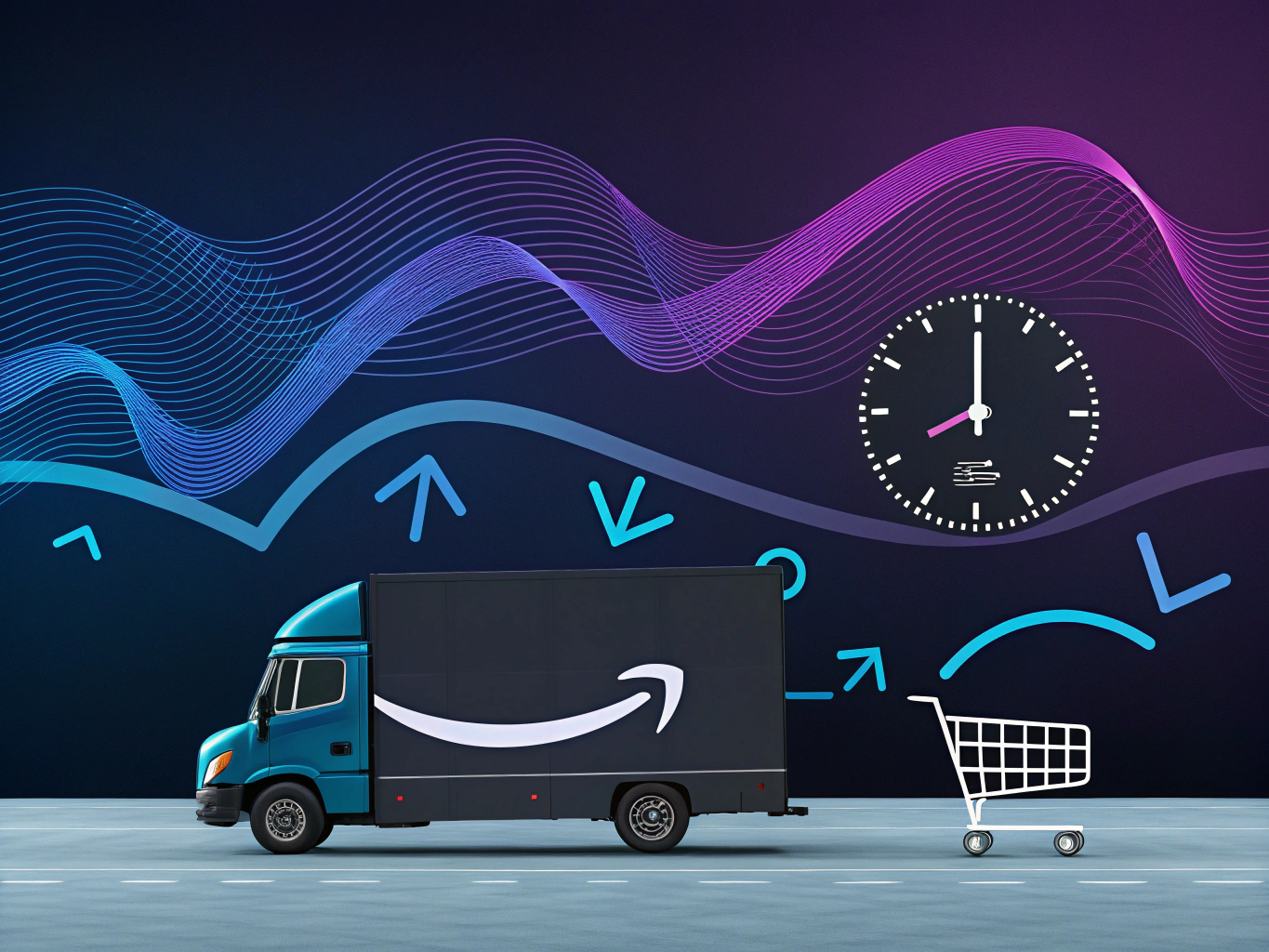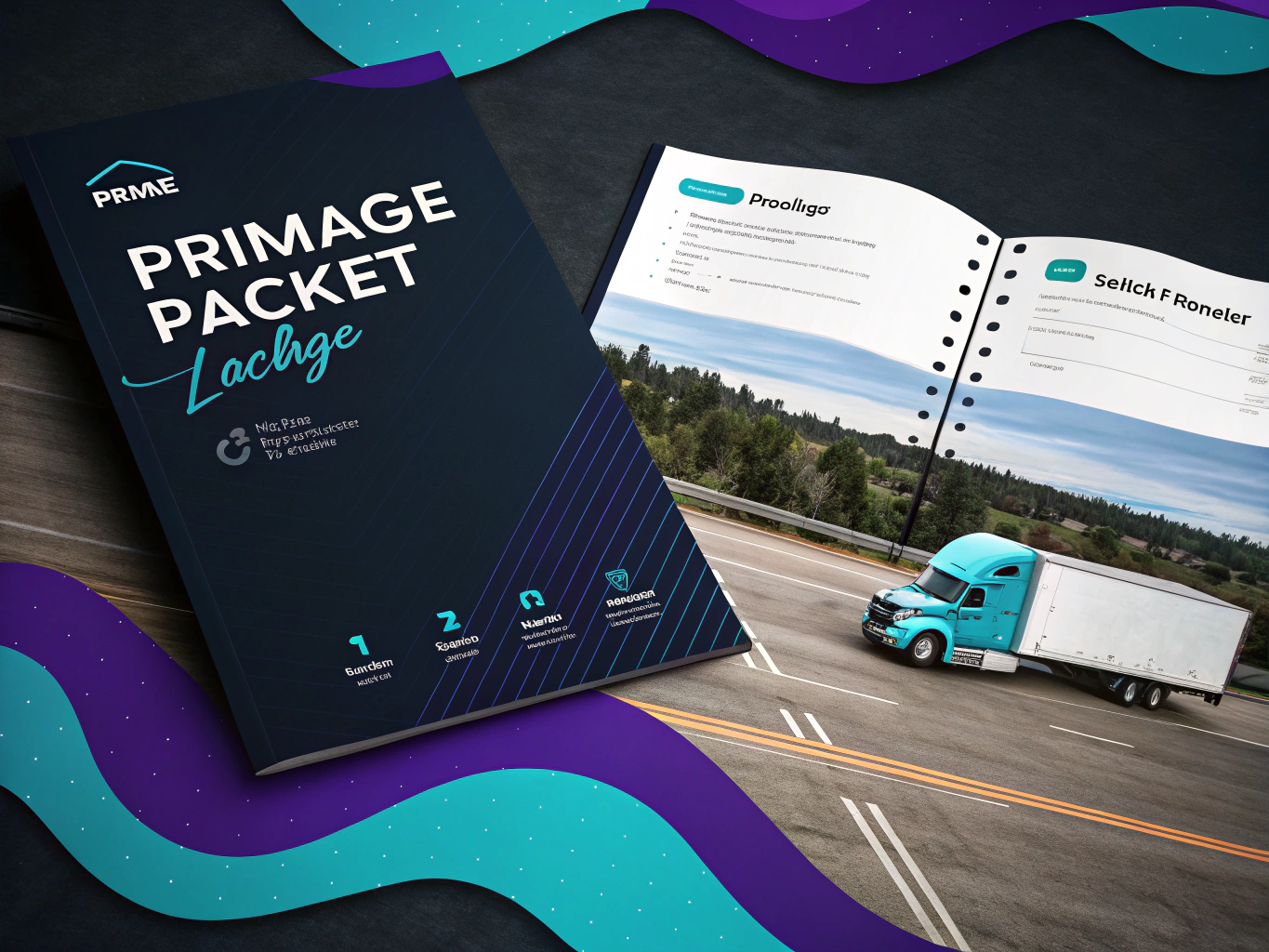Remember when Amazon Prime was just about getting your stuff in two days? Those were simpler times. Now, we’re watching the evolution of ecommerce fulfillment play out like a sci-fi movie – except instead of space battles, we’re dealing with warehouse logistics and shipping deadlines. Learn more about the differences between dropshipping and Amazon FBA.

As someone who’s spent years helping brands navigate the complex waters of ecommerce, I’ve seen firsthand how Seller Fulfilled Prime (SFP) has become both a golden ticket and a potential trap for sellers. It’s like being handed the keys to a Ferrari – exciting, but you better know how to drive it. If you’re interested in selling on Shopify, check out how to find products to sell on Shopify.
What Actually IS Seller Fulfilled Prime?
Think of SFP as Amazon saying, “Hey, you can wear our jersey, but you’ve got to play by our rules.” It’s a program that lets sellers handle their own fulfillment while still sporting that coveted Prime badge on their listings. The catch? You’ve got to match Amazon’s legendary shipping speed and reliability. For those using multiple platforms, understanding Shopify vs Wix vs Squarespace can be helpful.
But here’s what makes it interesting: unlike FBA (Fulfillment by Amazon), where you’re essentially renting space in Amazon’s massive fulfillment machine, SFP puts you in the driver’s seat. You maintain control over your inventory, shipping processes, and customer service – for better or worse. Learn more about Seller Fulfilled Prime if you’re considering the Amazon Influencer Program, you should know the Amazon Influencer Program requirements.
The Evolution of Amazon’s Fulfillment Game
When Amazon first rolled out SFP, it was like they opened a VIP room in their marketplace. But the landscape has changed dramatically. Recent updates have made the program both more accessible and more demanding. For instance, sellers now have more flexibility with shipping carriers (goodbye, mandatory “Buy Shipping” requirement), but the performance metrics? They’re tighter than ever. Understanding Alibaba vs AliExpress could also be beneficial for multi-channel sellers.
Why Seller Fulfilled Prime Matters Now More Than Ever

Let’s cut through the noise: in 2024, SFP isn’t just another fulfillment option – it’s becoming a strategic necessity for certain sellers. Here’s why:
The Prime Badge Effect
We’ve all seen those conversion numbers – Prime-eligible products typically see a 30-50% boost in sales. It’s like having a FastPass at Disney World – customers just trust it more. But what’s fascinating is how this trust translates across different product categories:
- High-margin items where FBA fees eat into profits
- Oversized products that are expensive to ship to Amazon
- Items with specific storage requirements
- Products you’re selling across multiple channels
Operational Control: The Double-Edged Sword
Here’s where it gets interesting – and where most sellers either thrive or dive. With SFP, you’re not just getting control; you’re getting responsibility. Think of it as running your own micro-Amazon:
- You control your inventory levels (no more long-term storage fees)
- You manage your shipping relationships (hello, negotiating power)
- You handle returns your way (within Amazon’s guidelines)
- You can fulfill orders for multiple channels from one inventory pool
The Real Cost of Freedom
Let’s talk numbers – because that’s what this really comes down to. The financial equation of SFP isn’t straightforward, and anyone who tells you otherwise is probably trying to sell you something. Learn more about eBay selling strategies for additional insights.
Breaking Down the Economics
The cost effectiveness of SFP varies wildly depending on your business model. Here’s what you need to consider:
- Shipping costs (without Amazon’s negotiated rates)
- Warehouse space and management
- Staff for picking, packing, and shipping
- Technology infrastructure
- Customer service resources
But here’s the kicker – for many sellers, especially those with efficient fulfillment operations, SFP can actually be more profitable than FBA. I’ve seen brands cut their fulfillment costs by 20-30% after switching to SFP, particularly for items that are:
- Heavy or oversized
- Slow-moving but valuable
- Subject to long-term storage fees in FBA
The Hidden Benefits
Beyond the obvious cost comparisons, SFP offers some subtle advantages that don’t show up on a spreadsheet. If you’re considering selling on Etsy, understanding Etsy rank optimization can also be beneficial:
- Better inventory control and forecasting
- Reduced risk of stock stockouts
- More flexible multi-channel fulfillment
- Direct control over customer experience
Getting Your Foot in the Door: Qualifying for SFP
Here’s where the rubber meets the road. Amazon’s requirements for SFP aren’t just high – they’re designed to maintain the Prime promise. You’ll need:
The Basic Requirements
- Professional selling account
- 98.5% on-time delivery rate
- Order cancellation rate below 0.5%
- Use of Buy Shipping Services or approved carrier accounts
- Nationwide delivery capabilities
But these are just the technical requirements. The real challenge? Building a fulfillment operation that can consistently hit these marks without breaking the bank. It’s like training for a marathon – you need the right equipment, strategy, and mindset. Check out Amazon Seller University for more resources.
This isn’t just about checking boxes; it’s about creating a sustainable operation that can maintain these standards day in, day out. Because once you’re in, staying in is another challenge entirely.
Key Benefits of SFP Implementation

Let’s get real about Seller Fulfilled Prime for a minute. I’ve seen countless Amazon sellers struggle with the decision between FBA and SFP, often getting lost in a maze of conflicting advice. Think of SFP as that reliable friend who lets you keep your independence while still getting you into the cool Prime party – it’s a sweet spot between control and visibility. If you’re struggling with white balance in product photos, learn how to adjust white balance in a photo.
Enhanced Market Visibility
Here’s the thing about that little Prime badge – it’s like having a VIP pass at a exclusive club. Your products suddenly become visible to a massive audience of Prime members who filter out non-Prime items faster than New Yorkers dodge tourists in Times Square. We’re talking about a serious visibility boost that can transform your Amazon presence.
The numbers don’t lie (and trust me, I’ve dug deep into them). Products with the Prime badge typically see conversion rates jump by 30-50%. Why? Because Prime members trust that badge like it’s a seal of quality – and they should, given the strict performance requirements Amazon puts on SFP sellers. If you’re selling on Shopify, discover how to advertise your Shopify store effectively.
Operational Control Benefits
Remember that feeling when you first started your business, and you could control every aspect of your operation? SFP lets you keep that control while playing in Amazon’s sandbox. You’re maintaining your own inventory, choosing your shipping carriers, and handling returns your way – it’s like having your cake and eating it too (if your cake came with strict delivery deadlines).
This control extends beyond just basic operations. You can optimize your multi-channel strategy without the inventory restrictions that come with FBA. Want to fulfill orders from eBay, your website, and Amazon all from the same inventory pool? SFP makes that possible. It’s like being the conductor of your own e-commerce orchestra. For those selling on TikTok, understanding why TikTok Shop is so cheap could be insightful.
Financial Advantages
Let’s talk money – because at the end of the day, that’s what matters for your business. SFP can be significantly more cost-effective than FBA, especially for larger items or products with long storage times. I’ve seen sellers cut their fulfillment costs by 25-40% after switching to SFP, particularly those who already have efficient fulfillment operations. Discover the benefits of SFP if you’re using eBay, learn how to reprint a shipping label on eBay.
Qualifying for Seller Fulfilled Prime
Now, before you get too excited about these benefits, let’s talk about what it takes to get into the SFP club. Amazon isn’t handing out Prime badges like candy – they’re more like those exclusive nightclubs with strict door policies. When selling on Shopify, understanding Shopify Plus vs Shopify can also aid in decision-making.
Performance Requirements
The performance standards for SFP are no joke. You need to maintain:
– On-time shipping rate of 99%
– Valid tracking rate of 99%
– Cancellation rate under 0.5%
– Order defect rate under 1%
These metrics aren’t just numbers on a dashboard – they’re your business’s vital signs. Missing these targets is like failing a health check-up; it can get you kicked out of the program faster than you can say “two-day shipping.” Consider the PNG vs SVG debate when designing your online store.
Technical Infrastructure
Your technical setup needs to be solid. We’re talking about warehouse management systems that can handle real-time inventory updates, shipping software that integrates seamlessly with Amazon’s API, and tracking systems that would make FedEx jealous. It’s like building a high-performance engine – every component needs to work perfectly with the others.
Operational Standards
Here’s where things get interesting (and by interesting, I mean challenging). You need to offer:
– Two-day shipping to Prime customers
– Same-day processing for orders placed before your cut-off time
– Weekend shipping capabilities
– Holiday coverage
Think of it as running a marathon where you need to maintain sprint speeds – it’s tough, but doable with the right preparation and systems in place. Learn about the SFP pilot expansion for more insights on shipping expectations.
Implementation Strategy
Successfully implementing SFP is like playing chess – it requires strategy, foresight, and careful planning. Let’s break down how to make this happen without losing your mind (or your shirt).
Preparation Phase
Before diving in, you need to assess your resources honestly. Do you have the warehouse space? The right software? Trained staff? It’s like preparing for a space launch – you don’t want to realize you forgot something important after you’ve already lifted off.
Start with a thorough audit of your current operations. Map out your processes, identify potential bottlenecks, and plan how you’ll handle peak seasons. Remember, Amazon customers don’t care if it’s Black Friday or Christmas Eve – they expect their two-day shipping regardless.
Application Process
The application process for SFP isn’t just filling out a form and crossing your fingers. You’ll need to:
– Complete a trial period demonstrating your shipping capabilities
– Maintain required metrics during the trial
– Submit documentation proving your operational capacity
– Pass Amazon’s verification process
Think of it as applying for a high-security clearance – Amazon’s going to verify everything before giving you that coveted Prime badge.
Launch Planning
Your launch strategy should be methodical and measured. Start with a subset of your inventory, perhaps your most reliable products or those with the best margins. It’s like dipping your toes in the water before diving in – you want to make sure the temperature’s right.
Set up robust monitoring systems from day one. Track every metric, every delay, every customer interaction. The data you collect during your initial launch will be invaluable for optimizing your operations later.
And here’s something most guides won’t tell you: build relationships with multiple shipping carriers before you launch. When (not if) one carrier has issues, you’ll want backup options ready to go. It’s like having a spare parachute – you hope you never need it, but you’ll be glad it’s there if you do.
Remember, success in SFP isn’t just about meeting Amazon’s metrics – it’s about building a sustainable operation that can maintain those metrics while staying profitable. It’s a delicate balance, but with the right preparation and systems in place, it’s absolutely achievable.
Advanced Operational Considerations for Seller Fulfilled Prime

Let’s get real about what it takes to run a successful SFP operation. Having helped dozens of brands transition to Seller Fulfilled Prime, I’ve seen firsthand how the rubber meets the road – and it’s not always pretty. But with the right systems in place, it’s absolutely manageable.
Inventory Management: The Make-or-Break Factor
Think of inventory management like a game of Tetris – but instead of falling blocks, you’re juggling real products with real dollars attached. The key is maintaining optimal stock levels across multiple locations while avoiding the twin demons of stockouts and overstock.
Here’s what successful SFP sellers are doing:
- Implementing buffer stock calculations based on historical data
- Using multi-location strategies to optimize delivery zones
- Developing seasonal planning frameworks that account for demand spikes
- Setting up automated reorder points with safety stock considerations
Shipping Optimization: Where the Magic Happens
Remember what I said about AI being like an intern? Well, your shipping strategy needs to be smarter than that. The most successful seller fulfilled prime operations I’ve seen treat shipping optimization like a science experiment – constantly testing, measuring, and refining.
Critical elements include:
- Strategic carrier selection based on regional performance
- Zone skipping implementation for cost reduction
- Rate negotiation leveraging volume commitments
- Multi-carrier redundancy to ensure delivery promises
Cost Management and Profitability
Let’s talk money – because at the end of the day, that’s what this is all about. The fulfillment center choices you make can either drain your profits or supercharge them. I’ve seen both scenarios play out.
Fixed vs. Variable Costs
Your fixed costs are like a subscription to a streaming service – they’re there whether you use them or not. These include:
- Warehouse lease payments
- Basic staffing
- Software subscriptions
- Insurance
Variable costs are trickier – they scale with your business, but not always linearly. Think shipping supplies, additional labor during peak seasons, and those inevitable rush delivery charges when things go sideways.
Risk Management and Contingency Planning
If there’s one thing science fiction has taught us, it’s that things can go wrong in spectacular ways. The same applies to seller fulfilled prime operations. But unlike sci-fi disasters, these can be prevented with proper planning.
Weather and Seasonal Challenges
Mother Nature doesn’t care about your Prime delivery promises. I’ve seen entire operations grind to a halt because of snowstorms, hurricanes, or even a simple power outage. Your contingency plan needs to account for:
- Alternative shipping routes and carriers
- Backup power systems
- Cross-training staff for critical functions
- Emergency communication protocols
Future-Proofing Your SFP Operation

The e-commerce landscape is shifting faster than a Star Trek transporter beam. Staying ahead means understanding where Amazon’s fulfillment strategies are headed and how they’ll impact your business.
Emerging Trends and Technologies
We’re seeing some fascinating developments that could reshape seller fulfilled prime operations:
- AI-powered inventory forecasting
- Automated packaging solutions
- Predictive delivery routing
- Blockchain for supply chain transparency
Making the Final Decision
So, is seller fulfilled prime worth it? Like most complex questions in e-commerce, the answer is: it depends. But here’s a framework to help you decide:
The SFP Readiness Checklist
- Do you have the infrastructure to maintain two-day shipping?
- Can your margins absorb the shipping costs?
- Is your team ready for the operational complexity?
- Do you have systems in place for peak season management?
Conclusion: The Path Forward
Seller Fulfilled Prime isn’t just another fulfillment option – it’s a strategic business decision that can transform your Amazon presence. But like any powerful tool, it needs to be wielded with understanding and precision.
The successful SFP sellers I work with share one common trait: they treat it as a system to be optimized rather than a program to join. They’re constantly testing, measuring, and improving their operations.
As we look ahead to the rest of 2024, the opportunities in seller fulfilled prime are expanding. The recent program updates have made it more accessible, and the technology to support it is getting better every day. But success still comes down to execution.
Remember: Amazon’s customers don’t care whether their Prime products come from FBA or SFP – they just want their orders on time. Your job is to make that happen consistently, profitably, and scalably.
Whether you’re just starting to explore SFP or looking to optimize your existing operation, focus on building systems that can scale with your growth. The future of e-commerce fulfillment is hybrid, flexible, and increasingly automated – make sure your strategy reflects that reality. Check out the Amazon listing optimization tool for more tips.
👉👉 Create Photos, Videos & Optimized Content in minutes 👈👈
Related Articles:
- Dropshipping vs Amazon FBA: Which Model Wins in 2024
- PNG vs SVG: Which Format is Best for Your Product Images?
- How to Reprint eBay Shipping Labels: Quick Step Guide
Frequently Asked Questions
What is seller fulfilled prime?
Seller Fulfilled Prime is a program that allows sellers on Amazon to fulfill orders directly from their own warehouse while still enjoying the benefits of Amazon Prime, including Prime shipping options for customers. This program enables sellers to have greater control over their inventory and shipping processes while still being able to reach Prime customers.
How does seller fulfilled prime work?
Seller Fulfilled Prime works by allowing sellers to display the Prime badge on their listings once they meet Amazon’s stringent requirements for shipping and customer service. Sellers must be able to provide two-day delivery to Prime customers and handle returns according to Amazon’s standards, ensuring a seamless experience similar to Fulfillment by Amazon (FBA).
Is seller fulfilled prime worth it?
Seller Fulfilled Prime can be worth it for sellers who want to maintain control over their inventory and shipping while reaching Amazon’s vast Prime customer base. It can lead to increased sales and customer trust due to the Prime badge, but it requires a commitment to meeting Amazon’s high standards for delivery speed and service.
How to get seller fulfilled prime?
To get Seller Fulfilled Prime, sellers must initially go through a trial period where they demonstrate their ability to meet Prime shipping requirements. During this time, sellers need to fulfill orders with consistent two-day delivery, maintain high performance metrics, and provide excellent customer service.
How to apply for seller fulfilled prime?
To apply for Seller Fulfilled Prime, sellers need to enroll through their Amazon Seller Central account, agreeing to the program’s terms and conditions. After enrolling, they must complete a successful trial period that involves fulfilling a set number of Prime orders with the required delivery speed and service levels.
About the Author
Vijay Jacob is the founder and chief contributing writer for ProductScope AI focused on storytelling in AI and tech. You can follow him on X and LinkedIn, and ProductScope AI on X and on LinkedIn.
We’re also building a powerful AI Studio for Brands & Creators to sell smarter and faster with AI. With PS Studio you can generate AI Images, AI Videos, Chat and Automate repeat writing with AI Agents that can produce content in your voice and tone all in one place. If you sell on Amazon you can even optimize your Amazon Product Listings or get unique customer insights with PS Optimize.
🎁 Limited time Bonus: I put together an exclusive welcome gift called the “Formula,” which includes all of my free checklists (from SEO to Image Design to content creation at scale), including the top AI agents, and ways to scale your brand & content strategy today. Sign up free to get 200 PS Studio credits on us, and as a bonus, you will receive the “formula” via email as a thank you for your time.
